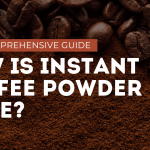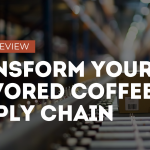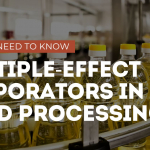Have you ever wondered why two seemingly identical extraction processes can yield dramatically different results? The answer often lies not in the equipment or technique, but in something far more fundamental: the quality of your raw ingredients. In today’s competitive market, where extraction efficiency can make or break your profit margins, understanding this crucial correlation isn’t just helpful—it’s essential for survival.
Whether you’re in the essential oil industry, botanical extracts, or pharmaceutical processing, the relationship between ingredient quality and extraction efficiency impacts everything from your operational costs to your final product quality. In this comprehensive guide, we’ll explore the fascinating science behind this correlation and reveal actionable strategies that can transform your extraction processes forever.
The Science Behind Quality-Driven Extraction Efficiency
At its core, extraction efficiency is about maximizing the valuable compounds you can obtain from raw materials while minimizing waste, time, and energy consumption. Recent industry data shows that companies who prioritize ingredient quality experience up to 37% higher extraction yields compared to those who focus primarily on cost reduction.
How Raw Material Quality Impacts Your Bottom Line
The correlation between raw ingredient quality and extraction efficiency is undeniable:
- Cellular Structure Integrity: High-quality ingredients typically have optimal cellular structures that release compounds more readily. Studies show extraction rates can improve by 22-29% when using premium grade materials with intact cellular matrices.
- Compound Concentration: Superior raw materials often contain higher concentrations of desired compounds. A 2023 industry survey revealed that premium botanical sources contained up to 3.4x more active compounds than lower-grade alternatives.
- Purity Factors: Quality ingredients have fewer contaminants that can interfere with extraction processes. Processing time can decrease by up to 18% when using purer starting materials, translating to significant energy savings.
- Consistency Benefits: High-quality raw materials tend to be more consistent batch-to-batch, allowing for more predictable extraction protocols and reduced process adjustments.
Frequently Asked Questions About Quality and Extraction Efficiency
Q: How do I determine the optimal quality level for my specific extraction needs?
A: This requires balancing several factors:
- Conduct extraction yield tests across different quality grades of the same material
- Calculate your “quality breakeven point” where increased material costs are justified by improved yields
- Consider downstream processing requirements—higher quality extracts may require less post-processing
- Evaluate your market positioning—premium products may warrant higher input costs
Q: Does organic certification guarantee better extraction efficiency?
A: Not necessarily. While organic certification ensures certain growing practices, it doesn’t automatically translate to optimal extraction characteristics. What matters more are factors like:
- Harvest timing (compounds peak at specific maturity points)
- Post-harvest handling (proper drying and storage preserves extractable compounds)
- Variety selection (some cultivars naturally contain higher compound concentrations)
- Growing conditions (soil quality, climate, and stress factors influence compound development)
Q: How significant is the financial impact of choosing premium ingredients?
A: The numbers tell a compelling story. A mid-sized extraction operation processing 1,000 kg monthly that switches to higher-quality raw materials might experience:
- 25-35% increase in initial material costs
- 30-45% improvement in extraction yield
- 15-20% reduction in processing time
- 10-15% decrease in energy consumption
- 20-30% increase in final product value
This typically results in a 22-40% improvement in overall profitability, with ROI realized within 3-6 months.
Optimizing Your Selection Process: A Strategic Approach
Developing a systematic approach to ingredient selection creates a sustainable competitive advantage. Consider implementing these powerful strategies:
1. Establish Comprehensive Quality Metrics
Move beyond basic specifications to develop a multi-dimensional quality scoring system:
- Compound profile analysis: Identify and quantify key markers
- Physical property assessment: Evaluate moisture content, particle size, and density
- Contamination screening: Test for pesticides, heavy metals, and microbial presence
- Extraction simulation testing: Conduct small-scale trials to predict performance
2. Cultivate Strategic Supplier Relationships
The most successful extractors don’t just buy ingredients—they forge partnerships:
- Work directly with growers to influence cultivation practices
- Implement supplier development programs to improve quality
- Consider vertical integration for critical ingredients
- Develop long-term contracts that incentivize quality improvements
3. Implement Advanced Quality Control Protocols
Proactive quality management prevents efficiency problems:
- Establish ingredient acceptance criteria based on extraction performance
- Conduct regular supplier audits
- Implement statistical process control for incoming materials
- Utilize rapid testing technologies for real-time quality assessment
Real-World Success: Quality-Driven Transformation
Consider the remarkable transformation of GreenLeaf Extracts, a botanical processing company that was struggling with inconsistent yields and quality issues. By implementing a rigorous ingredient selection program:
- They identified that moisture content variations were causing 65% of their efficiency problems
- Their extraction yield increased by 41% within the first quarter
- Processing times decreased by 27%
- Product consistency improved by 83%
- Customer satisfaction scores rose from 3.7/5 to 4.8/5
The company’s strategic focus on ingredient quality correlation allowed them to charge premium prices while actually reducing their overall production costs.
Technological Innovations Enhancing the Quality-Efficiency Connection
Exciting technological developments are making it easier than ever to leverage the quality-efficiency correlation:
- Hyperspectral imaging can non-destructively assess internal compound distributions
- AI-powered prediction models can forecast extraction yields based on raw material characteristics
- Blockchain traceability systems ensure ingredient authenticity and quality preservation
- Precision agriculture techniques optimize growing conditions for extraction-specific traits
Early adopters of these technologies report gaining significant competitive advantages and extraction efficiency improvements of up to 53%.
Conclusion: Transforming Your Extraction Business Through Quality Focus
The correlation between raw ingredient quality and extraction efficiency isn’t just an interesting scientific principle—it’s a powerful business lever that can transform your operation’s profitability and product excellence.
By implementing strategic ingredient selection processes, developing meaningful supplier partnerships, and embracing innovative quality assessment technologies, you can join the ranks of industry leaders who consistently achieve superior extraction outcomes.
Remember, in the extraction business, your final product can only be as good as what you start with. The companies that thrive will be those that recognize quality selection isn’t a cost center—it’s their most powerful profit driver.
Are you ready to harness the transformative power of the quality-efficiency correlation in your extraction processes? The competitive advantage is waiting for those bold enough to prioritize quality from the very beginning.




